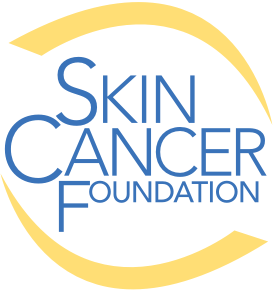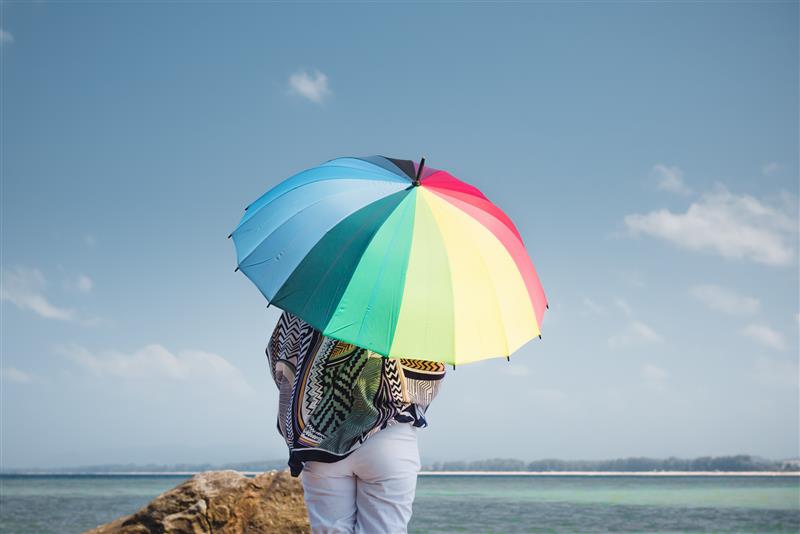You asked, we answered! A senior vice president of The Skin Cancer Foundation provides evidence-based answers to common questions about sun protection.
Q: Is it too late for me to take action to protect my skin after years of tanning?
C. William Hanke, MD: Sun damage adds up throughout your lifetime. But it is never too late to incorporate sun safety into your daily routine. No matter what age you are, you should use sunscreen daily and take other sun-protective measures.
In addition to being the major cause of skin cancer, the sun’s ultraviolet (UV) radiation is the leading cause of skin aging. Visible signs of UV damage include wrinkles, age spots and the breakdown of collagen, elastin and subcutaneous fat, which causes sagging of the skin. Daily sun protection can help slow skin aging and reduce the DNA damage in skin cells that can cause mutations that lead to skin cancer.
A variety of treatments can help reduce or undo photodamage to the skin and even remove some skin precancers that might otherwise turn into full-blown skin cancers. These treatments include chemical peels, laser resurfacing, photodynamic therapy, topical retinoids, topical exfoliants and topical chemotherapies. When using any of these treatments, it is important to be especially mindful about sun protection, as they can make the skin more sun-sensitive for several days after the treatment ends. It is important to continue to practice diligent and consistent sun protection after the treatments for the benefits to last.
Q: Is sunscreen necessary when I’m only going to be outside briefly?
Dr. Hanke: Even after just a few minutes in the sun, skin damage can occur. Sun exposure adds up, even from small tasks like taking the dog for a walk, waiting at the bus stop or retrieving the mail. It is important to use sun protection every day.
Your skin is also vulnerable when you’re indoors or in a car. Window glass blocks almost all the sun’s ultraviolet B (UVB) rays, the ones most responsible for sunburn. But ultraviolet A (UVA) light can pass right through. UVA can also cause sunburn as well as tanning, wrinkles and skin aging. This means that you can acquire skin damage while in any space that has windows, including while traveling in a car, bus or airplane. Because both types of UV contribute to the formation of skin cancer, this is another important reason to find a sunscreen you like and use it every day, all year long. You can also have special window film applied to your house or car windows that blocks more than 99 percent of both UVA and UVB rays.
Q: I’m allergic to sunscreen; what should I do?
Dr. Hanke: A person having a pure allergy to sunscreen is uncommon. What is referred to as a sunscreen allergy is more likely photosensitivity, meaning the sunscreen causes a reaction triggered by sunlight. If you have a reaction to one sunscreen, you can simply try using a different type of sunscreen. If you know what ingredient caused a negative reaction, try using a sunscreen without that ingredient.
Sunscreen active ingredients are often categorized as either chemical or physical (mineral), but all of them are chemically derived. The ones called chemical are actually UV organic filters, which absorb and dissipate the UV radiation. The ones called mineral are also known as physical or inorganic filters and include titanium dioxide and/or zinc oxide. They stay on top of the skin and deflect and absorb the UV light. The physical (mineral) ingredients are less likely to cause skin irritation.
It is important to note that often the cause of the reaction may not be the active sunscreen ingredients, but rather an inactive or trace ingredient, such as a fragrance, preservative or antiaging ingredient. If you experience an adverse reaction to one or more sunscreens, you may benefit from having patch and photopatch testing to determine which type of allergy or sensitivity you have.
Clothing is also an effective sun protection method. If you prefer not to wear sunscreen on your body, consider wearing UPF-rated clothing. In fact, The Skin Cancer Foundation recommends a comprehensive daily sun protection regimen that includes seeking shade, especially from 10 AM to 4 PM, the hours of greatest solar intensity; wearing UV-protective clothing, a wide-brimmed hat and UV-filtering sunglasses; and applying an SPF of 30 or higher broad-spectrum sunscreen for everyday use to all exposed areas. Following these guidelines can help significantly reduce your lifetime chances of developing skin cancer and help slow skin aging.
Q: Does tanning provide any UV protection?
Dr. Hanke: There is no such thing as a healthy, safe or “protective” tan. Tanning itself is the result of DNA damage to the skin. UV radiation causes skin damage, whether from the sun or a tanning bed, and it starts within minutes of exposure. Getting even a light or mild tan results in damage to your skin. I emphasize to patients that it only takes one damaged skin cell to start a skin cancer. If you still desire a tanned look, we recommend using a sunless, topical tanning product. It is important to know that sunless tanners do not provide protection against UV light. Therefore, it is crucial for patients to use daily sun protection at the same time. Even if the sunless tanning product you’re using has an SPF on the label, you should reapply a separate broad-spectrum SPF 30+ sunscreen every two hours when outdoors and immediately after swimming or sweating.
ABOUT THE EXPERT
 C. William Hanke, MD, is the program director for the Micrographic Surgery and Dermatologic Oncology Fellowship Training Program at Ascension St. Vincent Hospital in Indianapolis. He also serves as a senior vice president of The Skin Cancer Foundation and is a former president of the American Academy of Dermatology.
C. William Hanke, MD, is the program director for the Micrographic Surgery and Dermatologic Oncology Fellowship Training Program at Ascension St. Vincent Hospital in Indianapolis. He also serves as a senior vice president of The Skin Cancer Foundation and is a former president of the American Academy of Dermatology.





